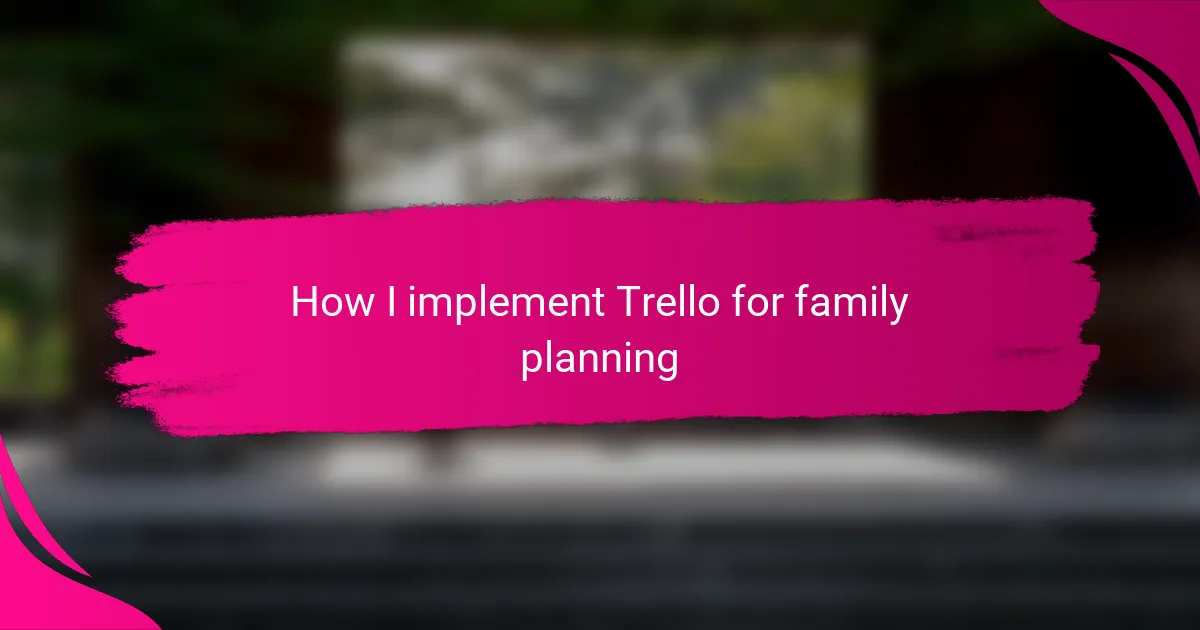Key takeaways
- Trello helps organize family tasks visually, reducing mental clutter and improving communication among family members.
- Setting up clear and themed lists on Trello promotes clarity and prevents feelings of overwhelm when managing family activities.
- Involving the whole family in updating the Trello board fosters a sense of responsibility and teamwork.
- Regular maintenance and flexibility in the board’s structure adapt to changing family needs, enhancing overall effectiveness in planning.
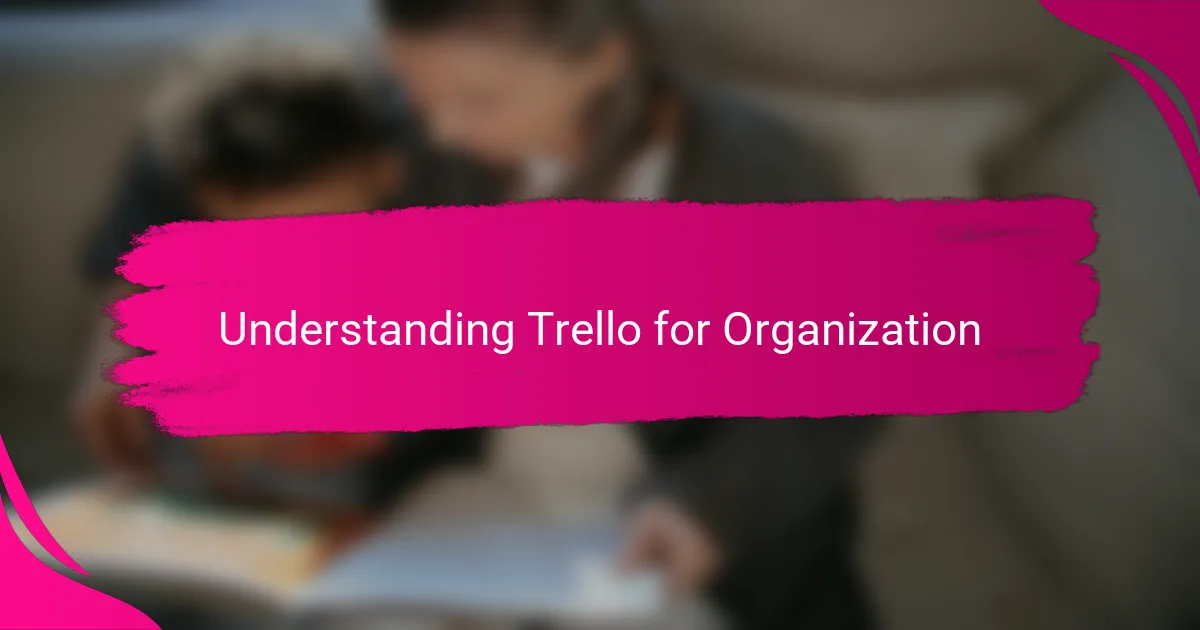
Understanding Trello for Organization
Trello is like a digital bulletin board where you can visually organize all the pieces of your family life. I found that breaking down tasks into cards and lists helped me see what needed attention without feeling overwhelmed. Have you ever felt that your family’s plans get lost in a flood of messages and reminders? Trello solves that by keeping everything in one clear place.
From my experience, the drag-and-drop feature makes reorganizing simple, especially when priorities change suddenly. It’s almost like moving sticky notes on a fridge door, except you can do it anytime, anywhere, and everyone in the family can access it. This flexibility has been a game-changer when managing busy schedules and chores.
Understanding how Trello structures information is key to making it work for your unique family needs. At first, I was skeptical if it would fit our chaotic lifestyle, but customizing boards and using labels brought order to our chaos. Seeing our progress visually gave me a genuine sense of accomplishment and control, which is priceless as a parent juggling multiple roles.
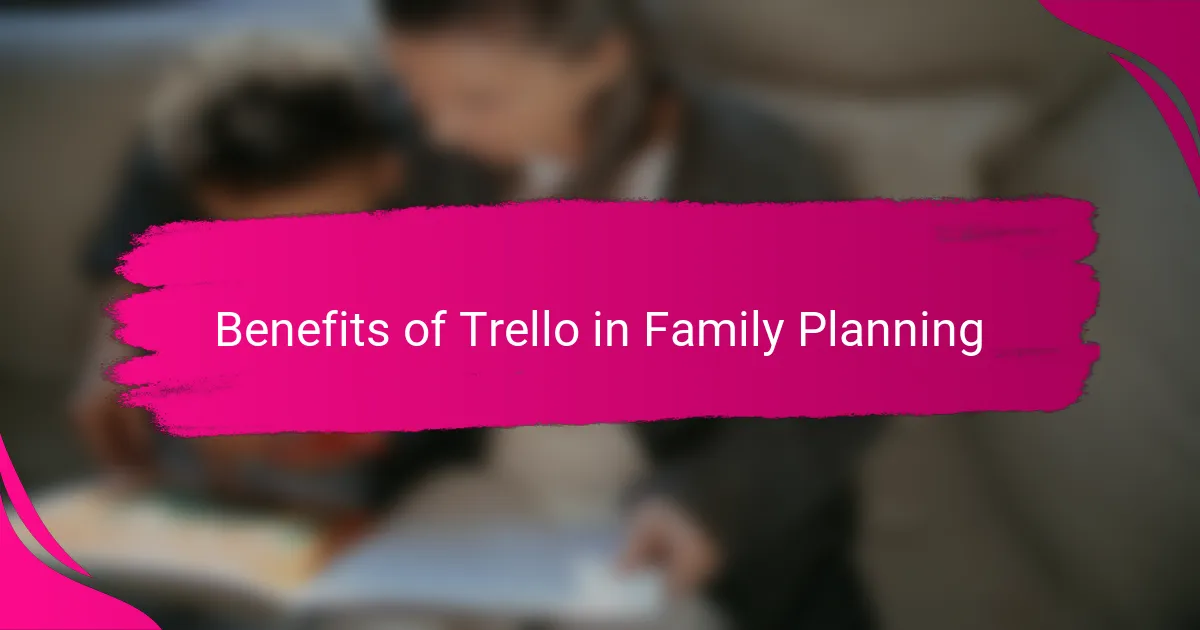
Benefits of Trello in Family Planning
One of the biggest benefits I noticed with Trello is how it brings everyone on the same page. No more endless texts or missed details because each family member can check the board anytime. Have you ever had a “Wait, were we supposed to bring snacks today?” moment? Trello helped me avoid those daily hiccups by making plans visible and accessible to all.
Another thing I appreciate is how Trello reduces my mental clutter. Instead of trying to remember every appointment or chore, I just update the board. It feels like I’ve offloaded a huge weight from my mind, which leaves me calmer and more present with my kids. That kind of mental space is priceless when parenting demands so much energy.
Lastly, seeing tasks move from “To Do” to “Done” on Trello is oddly satisfying. It’s not just a list—it’s a visual celebration of progress that motivates everyone. I often share those small wins with my family, and it creates a positive vibe that makes planning less of a chore and more of a team achievement. Doesn’t that make family life a little sweeter?
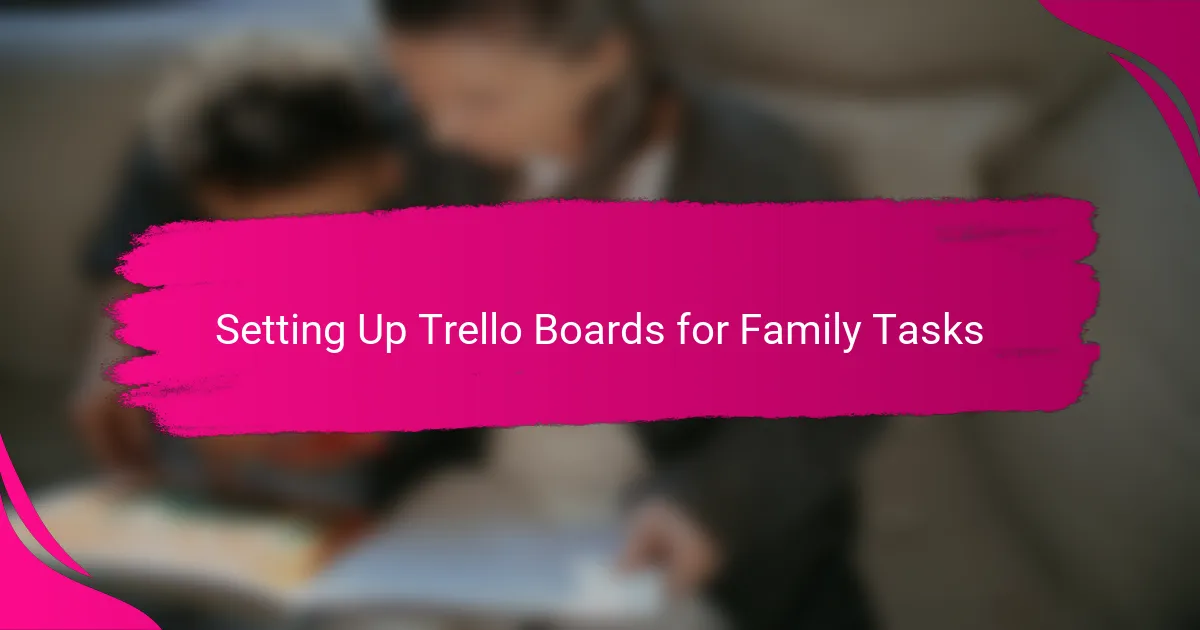
Setting Up Trello Boards for Family Tasks
When I first set up Trello boards for our family tasks, I started by creating clear lists like “To Do,” “In Progress,” and “Done.” This simple structure made it easy for everyone to understand where each task stood without needing extra explanations. Have you ever tried to keep track of family errands and felt like you were juggling too many balls at once? Organizing tasks this way gave me a real sense of control and clarity.
I also found it helpful to dedicate separate boards for different areas—like meal planning, school events, and household chores. That way, nothing got lost in the shuffle, and each family member knew exactly which board to check. It felt like giving each part of our busy life its own little home. And when my kids added cards themselves, it brought a surprising sense of teamwork and responsibility.
Labels became my secret weapon for prioritizing tasks. Using color-coded tags for “urgent,” “weekend,” or “budget-friendly” helped us instantly spot what needed attention first. It made decisions quicker and reduced the “what do we do next?” conversations that used to drag on. Have you discovered small tricks like this that make organizing feel less like a chore? For me, those details turned Trello into a family-friendly planner, rather than just another app.
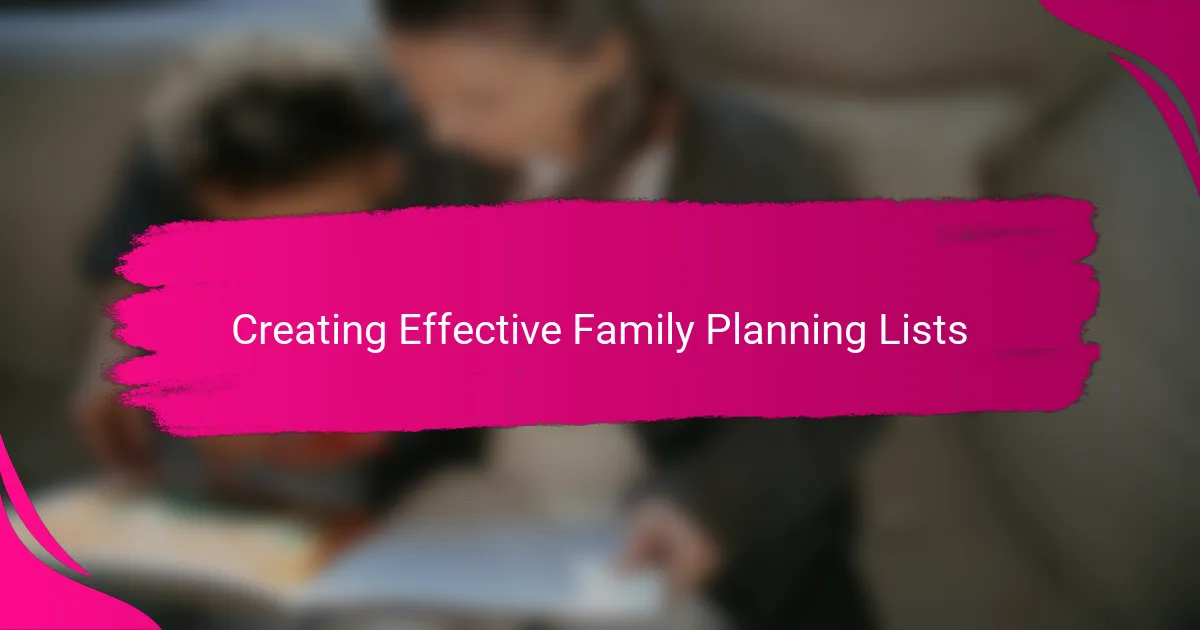
Creating Effective Family Planning Lists
What I learned early on is that creating effective family planning lists means being intentional about what goes on each list. Instead of dumping everything in one place, I separate tasks by themes—like appointments, groceries, or weekend activities—which instantly makes the board less daunting. Have you noticed how a cluttered list can make even simple errands feel overwhelming? Organizing with clear categories gave me that breath of fresh air.
Another trick that worked wonders for me was keeping the lists actionable and specific. Rather than vague notes like “plan vacation,” I broke it down into smaller steps like “research hotels” or “book flights.” I found this not only clarified what needed to be done but also made it easier to check off progress. Isn’t it amazing how tiny wins can build momentum and keep everyone motivated?
I also encourage families to revisit and revise their lists regularly. Life changes fast, and what seemed important last week might get pushed back or dropped altogether. I make it a habit to glance over the lists with my partner every Sunday evening, which helps us stay aligned and adjust plans realistically. Have you ever felt stuck because your family plans didn’t reflect reality? A flexible approach to list-making saved me from that frustration more times than I can count.
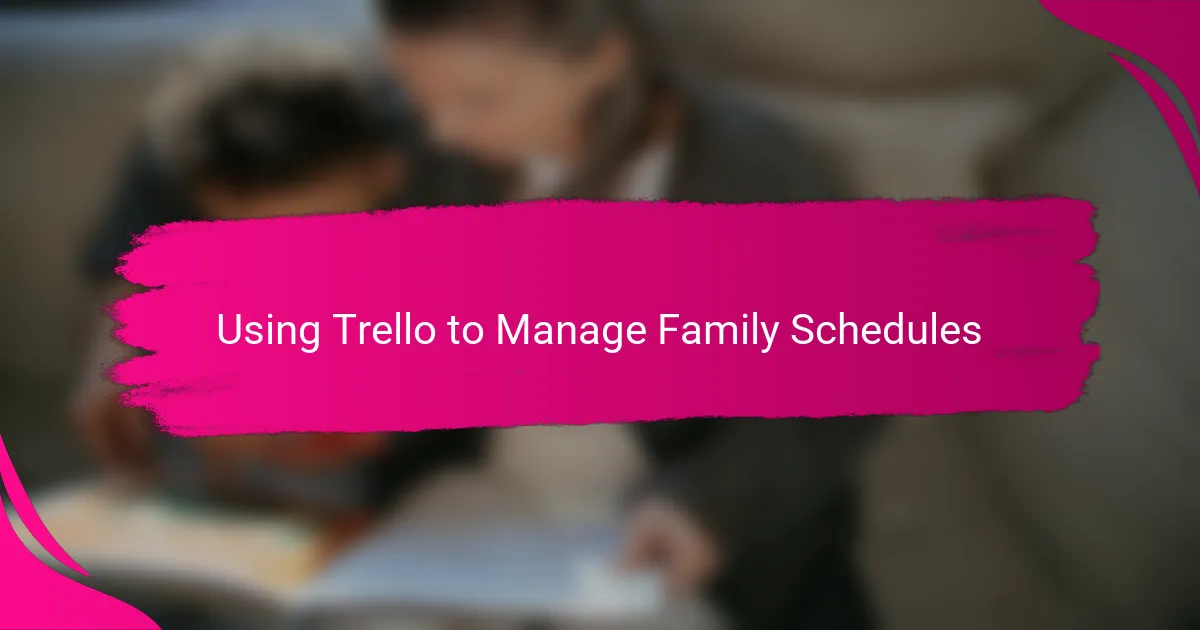
Using Trello to Manage Family Schedules
One thing I quickly realized when using Trello to manage our family schedule is how it simplifies juggling everyone’s activities. Instead of scrambling to remember who has soccer practice or a dentist appointment, I just check the board—and honestly, it’s a relief not to carry all those dates in my head. Don’t you find that having a clear overview of the week actually takes away a lot of stress?
What really made Trello click for me was setting up individual cards for each family member’s commitments. I could assign due dates and add notes like “bring water bottle” or “pick up after school,” which felt like having a personal assistant in my pocket. Have you ever missed something simple because it got lost in a sea of reminders? This way, everything stays front and center.
And here’s something I love: when plans shift, Trello’s drag-and-drop makes changing dates or rearranging tasks so effortless. It’s rewarding to see the schedule update instantly and know the whole family stays informed without a chain of confusing texts. That kind of smooth coordination has genuinely made our busy life feel more manageable—and I think it can do the same for you.
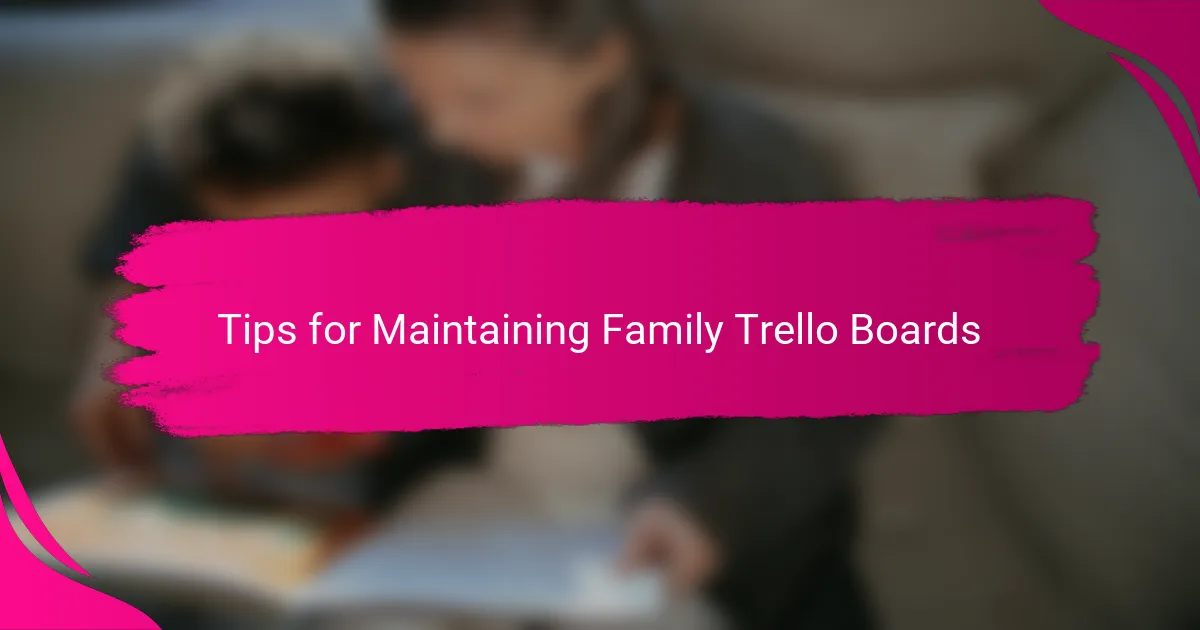
Tips for Maintaining Family Trello Boards
Keeping your family Trello board fresh and usable is key to preventing it from turning into digital clutter. From my experience, a quick weekly check-in helps a lot—removing completed cards and updating tasks keeps the board relevant and inviting. Have you tried setting a reminder to tidy up your board? It’s amazing how a little maintenance reduces overwhelm and keeps everyone motivated.
Another thing I’ve learned is to involve the whole family in updating the Trello board. When my kids started moving their own cards or adding chores, it gave them a sense of ownership and made them more responsible. Does your family participate actively, or is it just one person managing the plan? Sharing the load can turn planning into a team effort rather than a solo job.
Lastly, don’t be afraid to tweak your boards as your family’s needs evolve. I once got stuck using a structure that didn’t fit our new routine, and it made everything harder. Switching up lists or labels based on what’s currently important breathed new life into our planning. How often do you reflect on your system to keep it working for you? Flexibility is the secret to staying organized without stress.
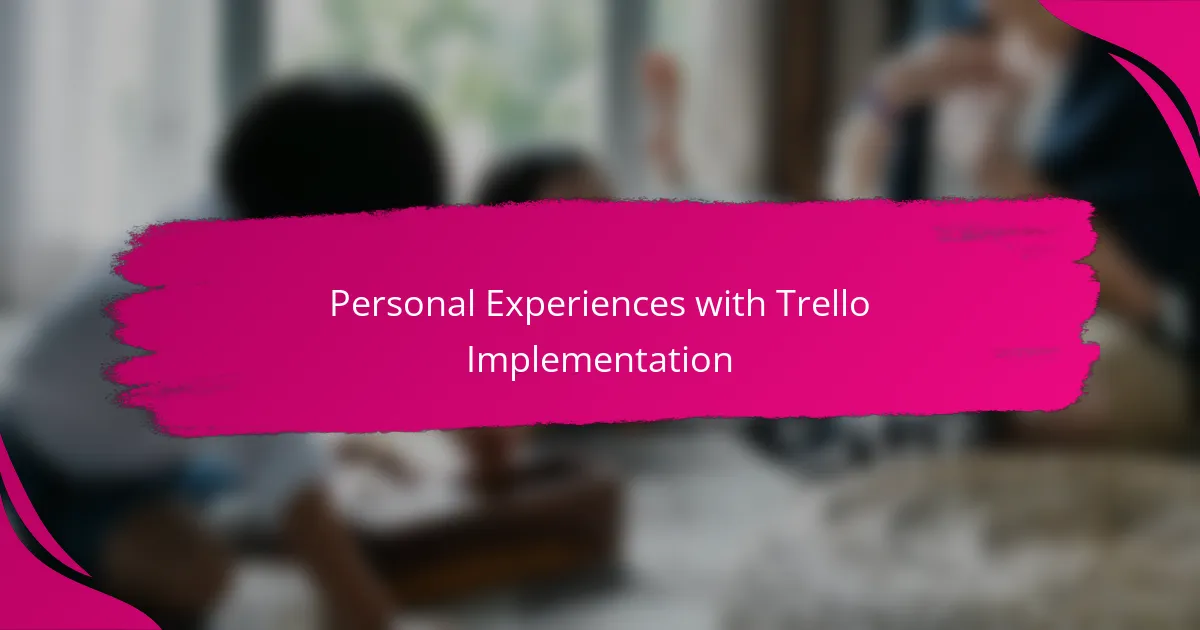
Personal Experiences with Trello Implementation
Honestly, the first time I introduced Trello to my family, I wasn’t sure if anyone would actually use it. But I was surprised when my kids started adding their own cards for homework and weekend plans. That little moment made me realize Trello wasn’t just a tool for me—it was becoming a shared space where everyone felt involved. Have you ever experienced that shift where a simple app suddenly feels like the heartbeat of your family routine?
One challenge I faced early on was remembering to keep the board updated myself. Sometimes life gets hectic, and I’d forget to move tasks or check off completed items. But over time, it became a natural part of our Sunday routine to review the board together. That ritual didn’t just keep us organized; it turned planning into quality family time. Don’t you think it’s amazing how small habits can change the entire dynamic?
I also noticed how seeing the tasks visually helped me manage stress better. When everything was swirling in my head, Trello’s clear layout gave me a calm sense of control. It’s like finally having the family chaos spelled out in front of you, which made decision-making less overwhelming. Have you found that kind of clarity sometimes feels more like a relief than just good planning? For me, that has been the biggest personal win.
